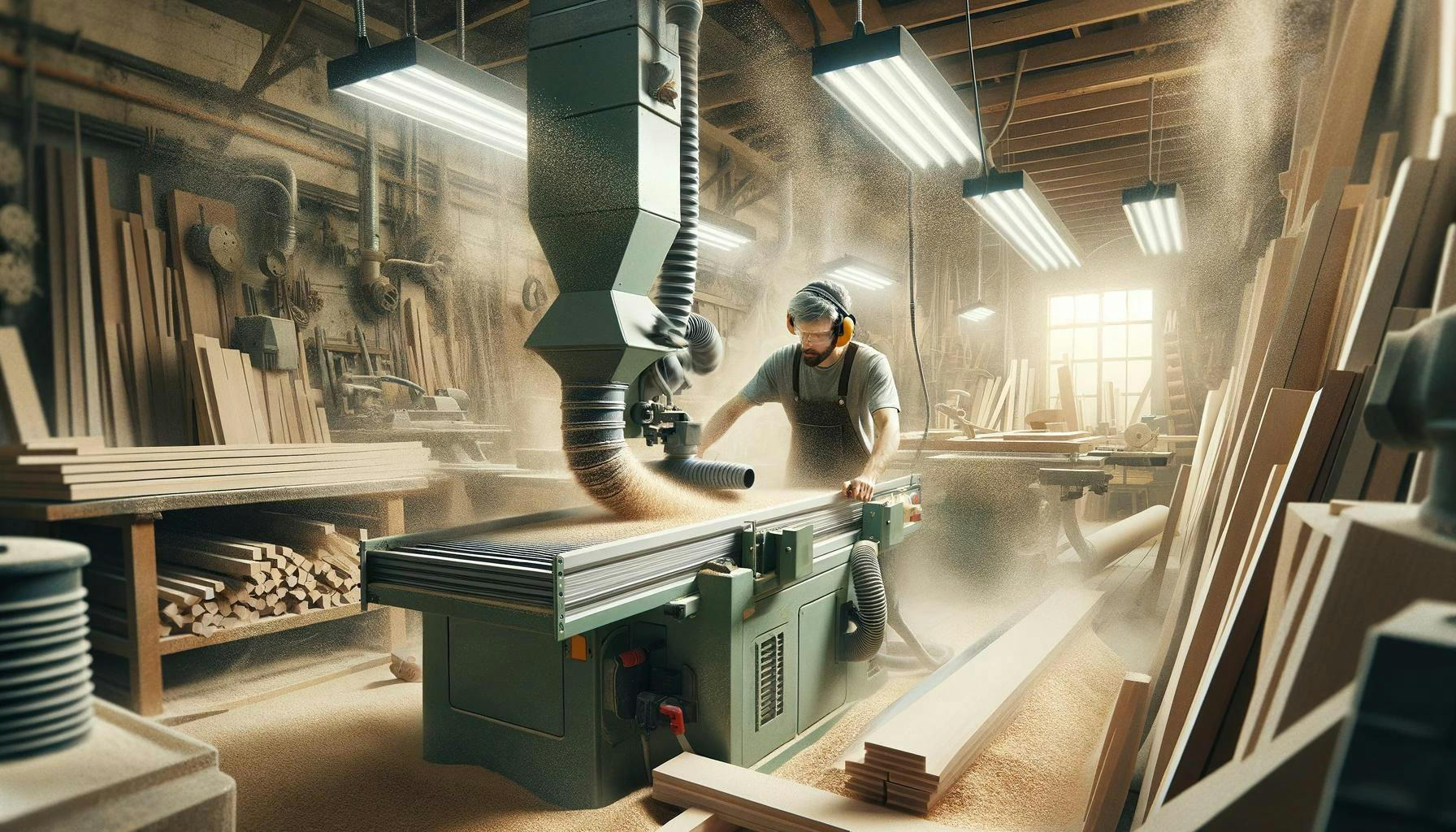
Local Exhaust Ventilation for Woodworking: Essential for a Safe and Efficient Workspace
Woodworking is an art that demands precision, skill, and an understanding of the materials being worked upon. However, alongside the beauty of crafted wood, there's an often overlooked aspect critical to the safety and efficiency of woodworking environments – local exhaust ventilation. In this article, we will delve into the importance of local exhaust ventilation for woodworking and how it ensures a safer and healthier workspace.
Understanding Local Exhaust Ventilation Systems
Local exhaust ventilation (LEV) systems are engineered controls designed to reduce exposure to airborne contaminants by capturing the contaminant at, or very near, the source and then exhausting it safely outside. In the realm of woodworking, these contaminants typically include sawdust, wood chips, and chemical fumes from adhesives and finishes.
The benefits of implementing local exhaust ventilation for woodworking are multifold. Firstly, LEVs protect workers from inhaling harmful dust and fumes, thereby reducing the risk of respiratory diseases. Secondly, these systems help in maintaining the cleanliness of the workspace, which, in turn, can lead to enhanced product quality and reduced housekeeping costs. Thirdly, they can help in compliance with health and safety regulations, which are of paramount importance in industrial settings across the UK.
Designing Efficient Local Exhaust Ventilation
When designing local exhaust ventilation for woodworking, it is crucial to consider various factors to ensure the system is both effective and efficient. The system must be tailored to the types of machines and operations taking place. Capture hoods should be placed as close to the point of dust generation as possible, without interfering with worker operations. Ductwork must be designed to carry the dust-laden air at sufficient speed to prevent deposition and clogging. The chosen ventilation fans and filters need to be powerful enough to handle the workload and remove the finest particulates from the circulated air.
The Role of LEVs in Compliance and Worker Safety
The Health and Safety Executive (HSE) in the UK mandates that employers must control substances hazardous to health in the workplace, such as wood dust. Failure to comply can result in significant fines and legal action. Thus, the installation of appropriate local exhaust ventilation systems for woodworking is not a mere recommendation—it is a legal requirement.
Local exhaust ventilation for woodworking fits into the broader mosaic of health and safety by offering workers protection that cannot be matched by personal protective equipment (PPE) alone. By capturing contaminants at the source, LEVs play a crucial role in maintaining air quality and ensuring a woodworking environment that is both compliant with regulations and resistant to the risks associated with poor air quality.
Maintenance and Servicing of LEV Systems
For local exhaust ventilation systems to remain effective, regular maintenance is critical. This includes routine checks of the airflow, cleaning or replacement of filters, and ensuring that all components are in good working order. Regular servicing and inspection of LEV systems not only extend their lifespan but also ensure that they operate at peak efficiency. This holistic approach to maintenance ensures that workers remain protected and production does not suffer due to system downtime.
Employers should also be aware of the requirement to have LEV systems thoroughly examined and tested every 14 months, or more frequently if dictated by a risk assessment. This examination ensures that the systems are fit for purpose and providing the necessary level of protection.
The Features of a High-Quality LEV Solution for Woodworking
When seeking a robust local exhaust ventilation solution for woodworking, businesses should look for systems that offer high-efficiency particulate air (HEPA) filters, variable airflow controls, and low noise operation, in addition to being easily serviceable and maintainable. Furthermore, employing smart devices and monitoring technologies can enable real-time tracking of system performance and prompt alerts for any necessary maintenance.
Pioneers in industrial systems solutions, such as those provided by WBT Services Ltd, offer a myriad of options tailored to individual business needs. For more details on the services offered, interested readers can visit WBT Services Ltd to explore a vast range of industrial solutions, including cutting-edge local exhaust ventilation systems that cater to the woodworking industry across the UK.
Conclusion
Investing in local exhaust ventilation for woodworking is not only a regulatory must but also a smart business decision. The right ventilation system protects employees, enhances productivity, and ensures that woodworking practices are sustainable. To maintain a competitive edge, woodworking businesses must attend to the health and safety of their employees, and LEV systems play a vital role in this endeavour.
The integration of local exhaust ventilation for woodworking mitigates health risks and fortifies the integrity of woodworking craftsmanship. It is a testament to the commitment of industry leaders towards providing safe working conditions. Embracing this necessity is the hallmark of a responsible business, and it is imperative for all woodworking operations to heed the importance of local exhaust ventilation. With the right system in place, businesses can continue crafting with confidence, knowing their workforce and their artistry are well-protected.